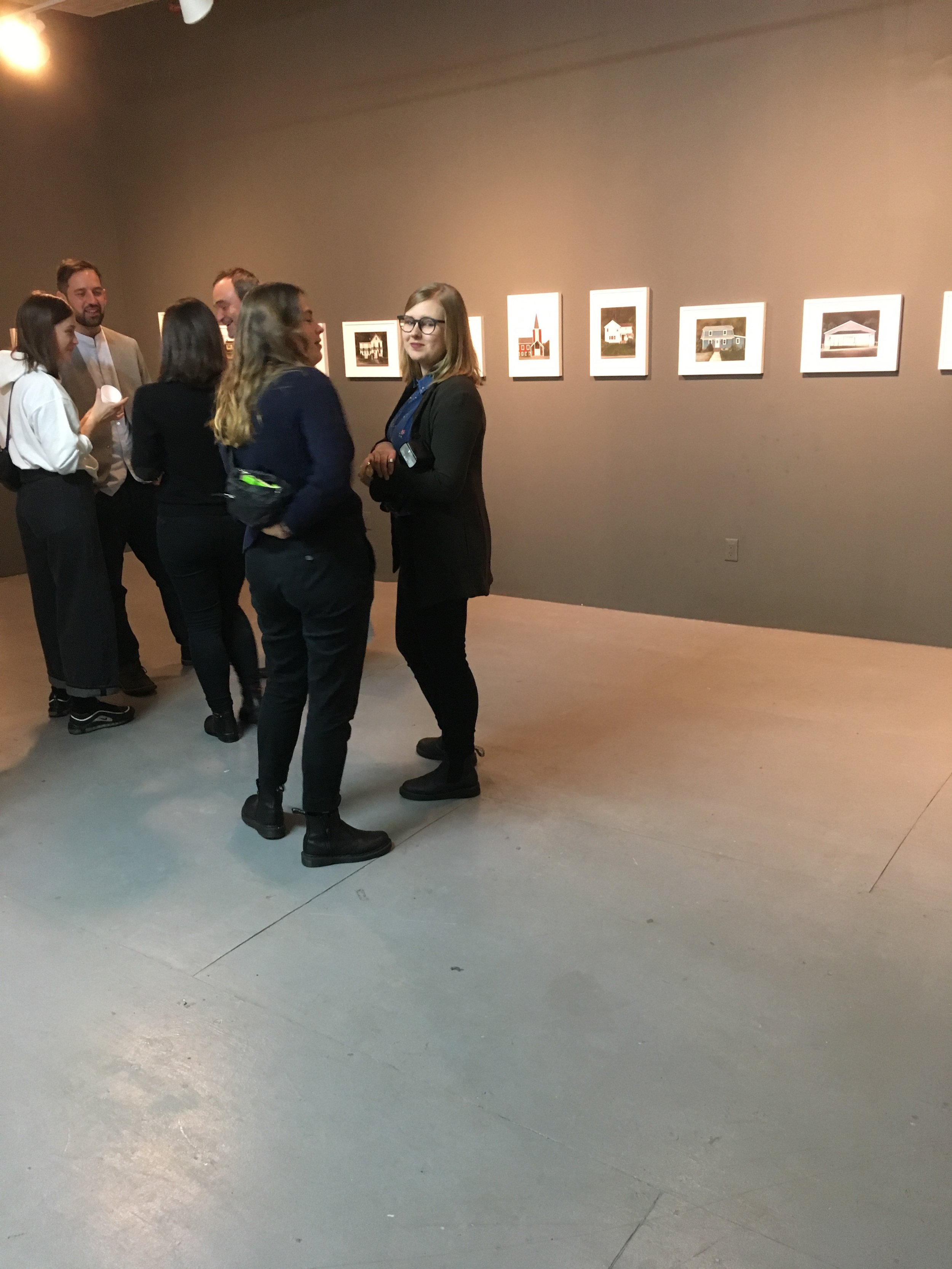March 2 - March 23
Opening reception March 2, 6-9 pm
NARS Project Space
Curated by Eriola Pira
Closing performance: March 23
Jesus Benavente: I'm Not Dancing, I'm Struggling to Survive
NARS Foundation is pleased to present Paper Town, an exhibition of a new work by recent residency artist Alina Grasmann. The artist's first New York City solo exhibition is a series of paintings of houses and other buildings in the fictional town of Agloe, NY. Agloe does not exist, except that it has and it does.
Agloe was first created as a “paper town” or “copyright trap” in the 1930s by Otto G. Lindberg, director of the General Drafting Co., and his assistant, Ernest Alpers. They named the fictional town in their road map of New York state after their initials, in essence signing it and protecting it from copyright infringement. Years later the publisher Rand McNally issued its map featuring Agloe, NY, but by then its originators could no longer claim theft as their fake town had led to the establishment and naming of the Agloe General Store -- an instance of the map preceding the territory. It long survived the store on paper roadmaps for over 90 years, making it to the digital era where one could get driving directions to Agloe. In 2014, after the New York Times inquired about its provenance, Google wiped Agloe off its map. But that hasn’t stopped countless pilgrimages to or in search of Agloe, spurred on by “Paper Town” a novel by John Green, where now a fake, albeit real, historical landmark sign welcomes visitors.
Having read about it in German newspapers, the artist visited Agloe in September 2017. Snapshots she took of homes, churches, gas stations and other buildings leading to the historical marker serve as the basis of some 40 oil on paper paintings, a selection of which is on view in the gallery. In these paintings, the fictional town is real. In their reliable precision and ostensible truth, the paintings stand in as objective documents, no less reliable than a map, for Agloe’s existence. The desire to make or believe something real or to have fiction come to life, and for that matter the inverse, is at the heart of why Agloe is still around and continues to fascinate, but it also speaks to the blurring lines between fiction and reality in the era of “fake news.”
Stripped of almost all identifying markers, the town in Grasmann’s paintings could very well be anywhere. This paper town is a Potemkin village. Grasmann places the viewer firmly on the street, at a consistent and forbidding distance, while the town appears in front of her: a picture perfect Americana. Agloe is a typical New England town, the kind that evokes a sense of nostalgia, comfort, and middle-class sensibility. But devoid of inhabitants or signs of activity, something feels off center, strange, and uncanny. Each painting isolates a structure and depicts it with the frontality and precision of an architectural diagram, revealing the essential forms while highlighting particular details of each specimen. But Grasmann isn’t interested in typologies so much as in creating space(s) in her paintings, an effect the installation also achieves --spaces that invite imagination as much as critical reflection. The landscape is lush, as are her colors, but there is little or no horizon line, or background. The frontal and flat manner in which she’s depicts the homes, dinners, or police stations suggests that there is nothing but a facade.










